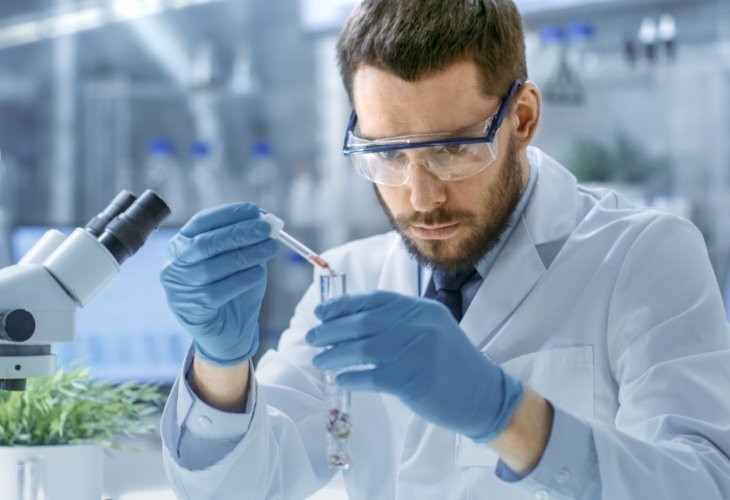In Search of God
Why Scientists Can’t Create Life from Nonliving Matter: The Mystery of the Living Cell
Explore the hidden complexity of the cell, the limits of modern science, and how the origin of life points to intelligent design
 (Photo: shutterstock)
(Photo: shutterstock)Avi asks: “Hello. From what I understand, scientists have never succeeded in creating life from non-living matter. But I’d like to understand why — after all, life is made up of chemicals. So wouldn’t it be enough to just combine the right chemicals together and get something living?”
* * *
Hello Avi, and thank you for your fascinating question.
Every living being is made up of tiny cells, each one functioning like a miniature factory. If we imagine a cell as an entire country, then the human body is a vast world made up of billions of microscopic nations, each filled with industries, vehicles, computers, and machines that all work automatically in perfect harmony. In fact, even the simplest living cell is far more complex than the entire plumbing system of New York City.
Early scientists didn’t know this. The first person to see cells and microorganisms under a microscope was Antonie van Leeuwenhoek in 1675. To him, cells looked like little bubbles dividing and moving. It would take almost two more centuries before scientists discovered genes — and the structure of DNA wasn’t revealed until 1953, by James Watson and Francis Crick.
How DNA Creates Life
A gene is a coded instruction — like a line of software code, that contains the blueprint for making proteins, the building blocks of every cell.
All of our genetic information is packed into a giant molecule called DNA, which contains about 3 billion nucleotides, the “letters” of this biological program.
Inside the cell’s nucleus, special molecules copy short sections of DNA into smaller strands called RNA. These RNA strands travel to a molecular “machine” called a ribosome, which reads the code and builds proteins out of amino acids. From these proteins, all the body’s cells — and therefore the entire organism, are made.
The living cell is thus not just a machine but a self-regulating supercomputer, a factory run by information. Its staggering complexity explains why no scientist has ever been able to create life from lifeless chemicals.
Why Life Cannot Arise by Chance
Even the simplest known organism requires many simultaneous systems working together for it to survive. Just as a car can’t drive without every essential part functioning, a cell cannot live if even one of its systems is missing. Among these are:
Ingestion – mechanisms that bring food into the cell while blocking harmful substances.
Digestion – converting food into usable energy (via lysosomes).
Excretion – removing waste and toxins.
Respiration – exchanging gases and generating energy (via mitochondria).
Detoxification – breaking down harmful compounds (via peroxisomes and lysosomes).
Cytoplasm – the watery medium (about 80 % water) that dissolves proteins and allows internal motion.
Cytoskeleton – a network of fibers that gives the cell structure and enables internal transport.
Cell membrane – a protective outer layer that filters materials and regulates oxygen and water.
DNA – the internal library containing the complete genetic code for making the cell.
Reproduction – a built-in system for reading and copying DNA through RNA, allowing cell division.
If even one of these features were missing, the cell would immediately die. Each of these systems is itself made of countless interacting components, many of which scientists are still studying.
For this reason, life cannot spontaneously arise from non-living matter.
The Miller–Urey Experiment and Its Limitations
You may have heard of the famous Miller–Urey experiment, which the media once portrayed as proof that scientists were close to creating life. In truth, the experiment produced only a few simple amino acids — the raw materials of life, but not life itself.
To use an analogy: if a living cell were a car, Miller and Urey succeeded in making a bit of fuel, not even the simplest model of a car.
As Professor Robert Shapiro, a leading DNA expert, wrote: “The best chemistry demonstrated by Miller and Urey does not bring us any closer to a living organism. A mixture of chemicals, even one containing amino acids, no more resembles a bacterium than meaningless words on scattered scraps of paper resemble the complete works of Shakespeare.” — Robert Shapiro, “Origins: A Skeptic’s Guide to the Creation of Life on Earth” (1986), p. 116
Because every living cell depends on many interdependent, highly complex systems that must function together from the very first moment, no natural process could assemble life on its own.
In our next article, we’ll continue exploring the incredible complexity of living organisms — and see how the science of life itself points directly to the existence of a Creator.

